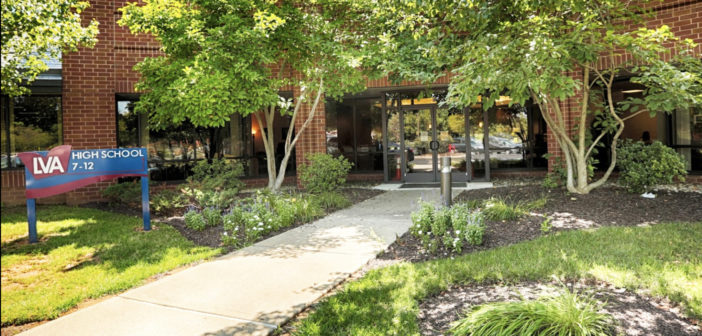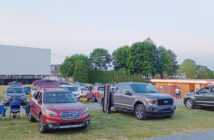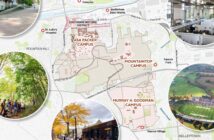The Lehigh Valley Academy Regional Charter School requested to build a new school for grades K-12 in Bethlehem Township.
Michael Metzger, the architect of Alloy5 Architecture, the firm in collaboration with the Lehigh Valley Academy, said the firm is still in the early programming process of design.
“Some of the things we’ve been discussing with the school is how they want to incorporate International Baccalaureate (IB) as much as possible with group learning spaces,” he said.
The Lehigh Valley Academy is an International Baccalaureate school. International Baccalaureate is an alternative to Advanced Placement (AP) programming.
Metzger said the school is shooting for a European aesthetic for the new facility, keeping the plans for the future school modern in appearance. He said the building will be 200,000 square feet with three floors. The high school students will take classes on the top floor, the middle grade students will be on the middle floor and the youngest grades will reside on the first floor.
Each floor will also have its own library.
“The library is very important,” Metzger said. “It’s going to be a central design element within the building.”
The CEO of Lehigh Valley Academy, Susan Mauser, said she consistently gives a reminder before each project team meeting that Lehigh Valley Academy is an International Baccalaureate school, and to benefit its students, the facility needs to encourage collaboration, uphold the school’s inquiry-based learning style and facilitate practical application education.
Mauser said she encourages a tight and purposeful budget plan so the administration can do more for its students and spend less money.
“As a charter school, what’s important to them (is) they’ve been able to do a whole lot more with a whole lot less, trying to be economical with the design,” Metzger said.
This responsibility in material is reflected in the early plans for the new facility. Lehigh Valley Academy’s focus is always locked on what will deliver the most support to its students.
Mauser said it isn’t common for a public charter school, or any school at all, to have such a prominent role in the design of its own building. She said the spaces will also be open to the public after school hours and on the weekends.
Mauser said teachers and community members are given a say in the design, too. She said her team has been and will continue to meet to figure out which aspects of the current school should be incorporated into the new facility and which aspects need to be changed.
“The school will be increasing its green space by 40 acres, allowing for outdoor learning spaces and play areas,” Mauser said. “We are in the process of developing a detailed budget for the project. Our goal is to be able to fix our facility costs at the amount that we would be spending in rent by 2023.”
Mauser said the new school plan is still in its infancy, but the project has strong legs. She said Lehigh Valley Academy has been renting space for the past 17 years so that it could grow its student body and refine its community values.
Mauser said the academy began with 170 students and 13 staff members in 2002. With the new facility, however, it will add 150 more students per grade, enrolling 1,950 in the new space, which will have 50,000 more square feet than the academy’s current building has.
Mauser said these changes seem big, but they are made for the benefit of the school.
“Square-foot rent costs keep increasing by two or three percent each year, and that is difficult to maintain in the long term,” Mauser said. “We are looking to do the fiscally responsible thing and fix our facility costs by owning our own building.”
Mauser said the Lehigh Valley Academy is an independent public charter school, meaning it cannot tax or increase the school subsidies in any way. She said it has to cover all of its own facility costs as part of its operating budget.
This project will not cost taxpayers or school districts any additional money aside from the funding the students already receive, Mauser said.
The Lehigh Valley Academy community has been at the forefront of planning for Mauser and her team. One member, Holly Parkinson, the school’s director of facilities and operations, has been involved in most aspects of the project.
Parkinson said she developed a long-term facility plan, gathering teams of architects, engineers and finance specialists. She was also a key player in site acquisition.
“Starting from scratch allows us to build a facility that makes physical sense, as opposed to retro-fitted office space,” Parkinson said. “We are looking to have a full-size gymnasium, a multipurpose space that can double as a black box theater, an auditorium and a full service kitchen to support multiple cafeterias.”
All of these spaces are lacking in the current building, and the additions will give educators the freedom to create outdoor and indoor learning experiences. Parkinson said she expects that the changes being made will better serve the needs of the students, staff and their community.
“The students, faculty, staff, administration and parents are looking forward to being able to move into their forever home,” Mauser said.






Comment policy
Comments posted to The Brown and White website are reviewed by a moderator before being approved. Incendiary speech or harassing language, including comments targeted at individuals, may be deemed unacceptable and not published. Spam and other soliciting will also be declined.
The Brown and White also reserves the right to not publish entirely anonymous comments.